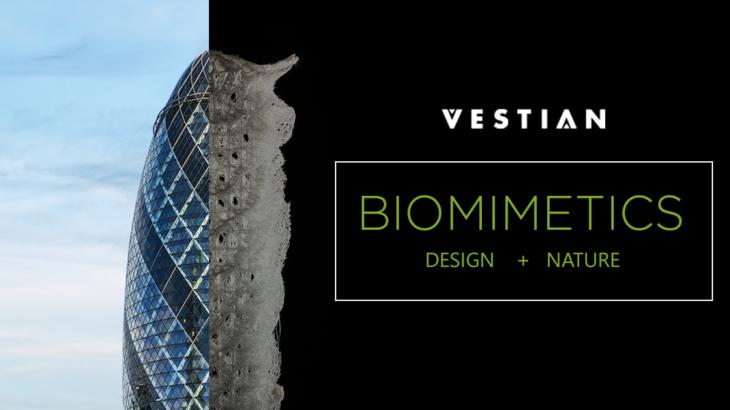Nature has been an integral part of human existence. People have been turning to nature for millions of years to help them solve problems their various problems. From materials to medicine to art, nature has influenced us in profound ways.
Architecture is not far behind when it comes to being inspired by nature. Nature has been one of the most evident influences in architecture over the years. The designs of the great 19th century architect, Antoni Gaudi were influenced by his study of tree trunks and the human skeleton. The science of studying nature’s models and emulating or taking inspiration from their designs and processes to solve human problems is popularly known as biomimicry.
As a branch of architectural philosophy, biomimetics uses nature as inspiration to conceptualize architectural landmarks that are both aesthetically and functionally brilliant. From subdued lines to gentle curvilinear exteriors, nature has provided architecture with many new design possibilities. In many cases, the use of biomimetics has resulted in buildings that are highly efficient, more durable and require less energy or fewer materials. Some of the majestic landmarks of the 21st century have been inspired by biomimetics.
A glowing tribute to the philosophy can be seen in the design of 30 St Mary Axe in London, popularly called Gherkin, that is influenced by the anatomy of the Venus' Flower Basket sea sponge. It’s unique design helps it consume half the power a building its size would usually consume. Similarly, the Eastgate Centre in Harare, Zimbabwe is inspired by the self-cooling mounds of termites. The building has no conventional air-conditioning or heating, yet the biomimetic design provides a regulated temperature inside the building all year round.
An equally important architectural marvel that espouses the beauty and functionality of biomimetics in building design is the National Taichung Theater in Taiwan. Using free-form structures to unite its many disparate units under one roof, the Theater uses the transience of water and natural rock formations as the guide to create a spatial experience of gigantic proportions. Such architecture follows a multidisciplinary approach to sustainability. Whether it is anemones or the Fibonacci spiral, the different ways that nature works serves as a baseline for design in these structures.
Biomimetics – Rethinking Office Space Design
Till date efficient office design in architecture was based on the principles of sustainability. Though a sound principle, it looked at reducing negatives like resource and energy consumption over productivity. On the other hand, biomimetics seeks to obtain the same results through its core strength of regeneration. Considering the workplace as an entity that self-cools, self-heats, self-ventilates and uses day-light as the primary light source shows the scale at which biomimetics can take forward the idea of sustainability. With a direct impact on the energy efficiency of the building, reduced costs, and heightened user-productivity, biomimetic architecture in office design will radically change the construction landscape for the better.
With the current, advanced technologies available to architects, it is easier to apply biomimetics in the real-world. Office design even in its most basic form needs to address the well being of the occupants. State-of-the-art softwares help architects to visualize every detail of their biomimetic design and also lets test said designs for errors. This ensures robust design modules before construction phase. Also, similar technology brings to form each deliverable according to the exact design specification no matter how complex.
Biomimetics- A Brilliant Design Approach
Biomimicry is an all-encompassing design approach that has influenced several other fields. An instance, a coat of material inspired by shark skin. The biomimetic design used in boats helps reduce drag. Another incredible story of how biomimetics helped in increasing the efficiency of a product is the curious case of the Shinkansen Train engineer. His bird-watching hobby helped design faster Shinkansen trains that were quieter through the use of a design inspired by the noise-dampening feather parts of the owl. Other such projects include the birds’ nests Olympic stadium in China. Simply put; biomimicry is the answer to the question ‘how would nature solve this problem?’.
Biomimetic architecture can help solve the significant challenges that the world is facing in a creative and sustainable way. The idea of maximizing benefits to the occupants with minimal resources is the biggest advantage that companies can seek from biomimicry.
